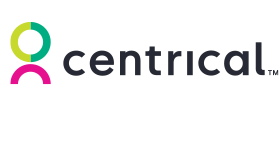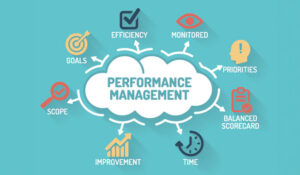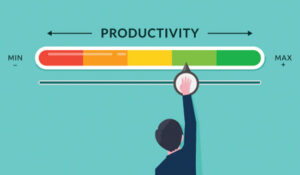Call centre productivity is a key element in delivering outstanding customer experience and achieving business growth.
In this article, we’ll cover some of the basics around call centre productivity – including calculating and measuring it, some key metrics and strategies, and a brief summary.
What Is Call Centre Productivity?
Call centre productivity reflects a call centre’s efficiency and effectiveness in handling customer interactions, such as calls, emails, and chats.
It is a key performance metric that measures how well a call centre is meeting its goals and delivering a positive customer experience while managing costs, processes, and resources.
How to Calculate Call Centre Productivity
Calculating call centre productivity usually involves a formula: total output/total input. call centre productivity can be measured in partial factor productivity and multifactor productivity.
Generally, measuring call centre productivity involves tracking various KPIs to assess the efficiency and effectiveness of the operations.
Collecting and analyzing these metrics can help call centres continuously improve their operations and get better aligned with business goals.
Key Metrics for Call Centre Productivity
Call centre productivity metrics consist of a combination of operational efficiency, customer satisfaction, and performance indicators. Here are some of the most important call centre productivity metrics:
Response Time
How quickly calls or inquiries are answered or responded to by agents. Lower response times are generally better for customer satisfaction.
First Call Resolution (FCR)
The percentage of customer issues or inquiries resolved during the initial contact. High FCR rates are a sign of efficiency and customer satisfaction.
Average Handling Time (AHT)
The average time it takes for an agent to handle a customer interaction, including talk time and associated tasks. A low AHT indicates higher call centre productivity.
Service Level
The percentage of calls answered within a specific time frame, such as 30 seconds or 2 minutes, reflecting the call centre’s ability to meet response time targets.
Abandonment Rate
The percentage of customers who abandon their call before speaking to an agent. High rates usually indicate problems with response times or service quality.
Customer Satisfaction (CSAT)
Measures customer satisfaction with the agent interaction, usually collected through post-call surveys.
Net Promoter Score (NPS)
Measures the likelihood of customers recommending the company’s products or services.
Average Speed of Answer (ASA)
The average customer wait time in the queue before an agent answers.
Factors Affecting Call Centre Productivity
Call centre productivity can be influenced by a wide range of factors, including:
Call Volume
High call volumes can lead to longer wait times and increased pressure on agents, potentially reducing the efficiency and quality of these interactions.
Agent Training
Call centre agent training and expertise play a crucial role in productivity. Well-trained agents are more efficient at handling customer inquiries and resolving issues.
Technology and Tools
The quality and efficiency of the call centre’s technology infrastructure can significantly affect productivity. Along the same vein, tech issues (such as system outages or software glitches) can disrupt operations and reduce productivity.
Quality Assurance
Quality assurance programs can enhance productivity by ensuring consistent service quality and identify areas of improvement.
Employee Engagement
Employee engagement and job satisfaction are critical to call centre productivity. Happy and engaged agents will be productive and provide better customer service.
Customer Behavior and Expectations
Customer behavior and expectations are wild card factors that can impact call centre productivity. Changes in customer preferences, communication channels, or demographics may require adjustments in call centre operations.
External Factors
External factors such as seasonality, marketing campaigns, product recalls, industry changes, and other factors can lead to fluctuations in call volume and affect productivity.
Regulatory Compliance
Regulatory compliance requirements in regulated industries may create additional tasks and required training for agents, affecting their handling times.
6 Strategies for Improving Call Centre Productivity
There are many strategies that call centres can apply to improve productivity. Below are a few recommendations by category:
Ongoing Training and Development
- Implement comprehensive training programs for new and existing agents to ensure they have the skills and knowledge needed to handle customer inquiries efficiently.
- Ongoing coaching and feedback to help agents improve their performance and adapt to changing customer needs.
- Upskill and cross-skill agents to handle a variety of inquiries and reduce idle time during low call volume periods.
- As part of their training and development, give agents the authority and tools to resolve customer issues without unnecessary escalations. Promoting autonomy and decision-making reduces bottlenecks and delays.
Elevate Quality Assurance Processes
Call centre productivity can be helped by solid QA processes:
- Regularly evaluate agent-customer interactions and provide constructive feedback for improvement.
- Optimize these processes by adding enhancements, such as flexible forms, utilizing smart segmentation, establishing better feedback loops, and determining root causes.
Leverage Technology and Tools
Below are some examples of technology and tools to look for as part of improving call centre productivity:
- Microlearning helps reinforce training by sending bite-sized learning modules within the flow of work. AI-powered microlearning will trigger learning materials by detecting learning and performance gaps.
- Augmented coaching can streamline administrative tasks and help supervisors prioritize who needs coaching, leading to much more timely, meaningful, and productive conversations while saving time.
- Gamification taps into intrinsic and extrinsic motivators that add a touch of fun while keeping employees engaged and performing. Go beyond the leaderboard and include an ongoing narrative, levels, badges, rewards, and other features to drive long-term behaviors and productivity.
- Implement AI solutions that automate low-lift customer inquiries, freeing time for agents to handle higher-level interactions. Generative AI solutions, such as ChatGPT, enable the quick and scalable creation of frontline learning materials.
Create a Culture of Learning
Call centre productivity can be improved by creating a culture of learning. Some tips:
- Develop a robust knowledge base that agents can access quickly to find accurate and consistent information.
- Consider implementing social sharing capabilities. Agents can contribute their own tips and tricks for success, building a culture of collaboration and trust.
Monitor and Analyze Metrics
Monitoring and analyzing metrics is critical as part of call centre productivity:
- Benchmark against industry standards and adopt best practices to stay competitive and innovative.
- Continuously monitor key performance indicators to identify trends and areas for improvement.
- Use data analytics to gain insights into customer behavior and preferences.
Create a Customer Feedback Loop
Call centre productivity can benefit from establishing a customer feedback loop:
- Solicit feedback from customers and use it to make improvements to products, services, and call centre processes.
- Actively listen to customer complaints and take steps to resolve issues promptly.
Summary and Key Takeaways
We have covered some of the core aspects of call centre productivity. Below are some key takeaways:
Call centre productivity is a critical success metric that reflects a call centre’s ability to deliver an outstanding customer experience while maintaining efficiency and effectively managing costs, resources, and processes.
Core call centre productivity KPIs include response time, AHT, FCR, CSAT, NPS, and other metrics.
Factors such as high call volume, gaps in agent training, employee morale and engagement, customer behavior, tech issues, product updates/recalls, and others can affect call centre productivity.
Call centre productivity strategies include continuous agent training and development, elevating quality assurance processes, monitoring and analyzing metrics, implementing new technology and tools, and creating a culture of learning.
This blog post has been re-published by kind permission of Centrical – View the Original Article
For more information about Centrical - visit the Centrical Website
Call Centre Helper is not responsible for the content of these guest blog posts. The opinions expressed in this article are those of the author, and do not necessarily reflect those of Call Centre Helper.
Author: Centrical
Published On: 21st Nov 2023 - Last modified: 9th Dec 2024
Read more about - Guest Blogs, Centrical






 Centrical provides a real-time performance management, microlearning, gamification, coaching, and voice of the employee platform for frontline teams. The solution inspires and personally guides employee success and growth by making every moment actionable.
Centrical provides a real-time performance management, microlearning, gamification, coaching, and voice of the employee platform for frontline teams. The solution inspires and personally guides employee success and growth by making every moment actionable. 






























